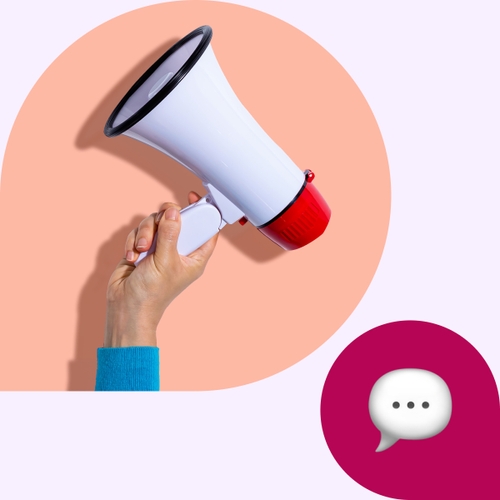Effective communication skills involve more than just choosing the right words. To communicate effectively, you must consider not just what you’re saying but how you’re saying it — including your body language and even your digital etiquette.
Whether you’re a salesperson trying to close a deal with a potential client, a people manager tasked with guiding a team, or a CEO leading a company through a period of change, you need solid communication skills in order to succeed. These skills influence how people interpret your ideas, the relationships you form, and whether your business interactions are successful.
Ten proven ways to improve your communication skills
In both personal and professional contexts, expressing yourself clearly and understanding others helps build trust, drive results, and create meaningful connections to move the conversation forward. Here are 10 research-backed ways to improve your communication:
1. Be clear and concise
Keep your audience engaged by getting straight to the point. Avoid lengthy messages and industry-specific jargon. Focus on one main idea at a time.
- Hone this skill: Before sending a message or starting a presentation, ask yourself, “What is the main thing I want my audience to understand?” Structure your message and supporting points around this key idea.
2. Prepare ahead of time
Organize your thoughts and main points before speaking or presenting to stay focused. Write down key ideas, goals, and responses to potential questions your audience might ask.
- Hone this skill: Spend five minutes before each meeting to create an agenda. Stick to your list and avoid distractions. For presentations, create a simple outline that clearly states your opening, key messages, and desired takeaways.
3. Practice active listening
Active listening involves giving your full attention to the speaker and listening to understand, instead of just waiting to respond. Ask clarifying questions and paraphrase what you hear to confirm you understand correctly.
- Hone this skill: Try the “listen-paraphrase-ask” technique during your next conversation. Listen without interrupting, rephrase what they said in your own words, and follow up with a thoughtful question that shows you’re engaged.
4. Pay attention to nonverbal signals
Body language, facial expressions, and eye contact often communicate more than words. These nonverbal cues can either reinforce your message or completely contradict it. Being aware of the nonverbal cues from your audience can also help you gauge how well you’re communicating.
- Hone this skill: Record yourself during a practice presentation or ask a trusted colleague for feedback on your body language. Focus on maintaining an open posture, making appropriate eye contact, and using facial expressions that match your message.
5. Watch your tone and energy
How you say something is just as important as what you say. Your tone should match your intent, bringing positive energy to conversations whenever possible.
- Hone this skill: Before important conversations, take a moment to set your intention and align your energy. Practice delivering challenging messages aloud to ensure your tone matches your goal for the conversation.
6. Build emotional intelligence (EQ)
Developing self-awareness and empathy changes how you connect with others, whether for external or internal communication in business. Knowing your own emotional triggers and understanding your audience’s unique perspectives helps you navigate complex workplace dynamics with respect.
- Hone this skill: Start by observing your own and others’ emotional reactions during conversations without judgment. Consider what might be motivating the other person’s response and try viewing situations from different perspectives before reacting.
7. Know when to pause
Sometimes the most powerful thing you can do is stop talking. Over-explaining clouds your message. Strategic pauses give others space to process and respond thoughtfully.
- Hone this skill: After making your point, count to three before moving on. This brief pause may feel longer to you than to your audience, but it creates space for questions and shows confidence in your message. It also gives others time to process the idea, allowing them to engage with you more thoughtfully.
8. Find points of connection
Even during disagreements, finding shared goals or values lays a foundation for productive conversations. Build common ground before diving into areas where you differ.
- Hone this skill: Start challenging conversations by recognizing what you both value: project success, team well-being, or personal goals. Use phrases like “We both want. . .” to establish alignment before discussing differences.
9. Tell stories for impact
Stories resonate in ways that data alone cannot. Well-chosen narratives make your ideas relatable, memorable, and emotionally engaging for your audience.
- Hone this skill: Collect examples from your experience that illustrate your key points. Keep these stories concise with a clear beginning, middle, and end that directly relate to your message.
10. Adapt to the medium
Different situations call for different communication tools. A message in a Slack project thread is ideal for updates and clarifications, but complex topics might need a huddle, email, or in-person conversation for better understanding.
- Hone this skill: Before communicating, ask yourself what outcome you want and which medium will best achieve it. When in doubt, select the option that lets you provide context and nuance when needed.
Key benefits of strong communication skills
Effective communication skills improve your professional and personal life. The ability to articulate ideas clearly and persuasively builds relationships, prevents conflict, and enhances both external and internal communication. It also improves collaborative work, regardless of your title or role.
Strong communication skills contribute to these main benefits:
- Better trust and connection. The more effectively you communicate, the more credibility and rapport you build with colleagues, clients, and stakeholders.
- Easier, more productive collaboration. Strong internal communication keeps teams aligned on goals, minimizes back-and-forth confusion, and helps projects progress smoothly.
- Fewer misunderstandings and less potential for conflict. When you express yourself clearly and listen attentively, you create healthier dialogue, even during disagreements.
- Stronger organizational culture. Aim for respectful, open communication between teams and with managers. This encourages transparency, psychological safety, and a shared sense of purpose.
- Better use of time and resources. Clear communication leads to fewer follow-up meetings, fewer revisions, and less time spent clarifying confusion. As a result, you can focus on more meaningful work.
- More effective interactions. As your communication skills improve, you’ll feel more confident in presentations, negotiations, and everyday conversations.
Overcoming common communication barriers
Even skilled communicators face obstacles that hinder understanding and connection. Recognizing these barriers and having strategies to overcome them helps you navigate tricky situations and prevent conflict from escalating. Common barriers include:
Stress and emotional triggers
Stress is one of the most common barriers to both internal and external communication. High-pressure situations make it difficult to think clearly and respond thoughtfully. When you feel your emotions rising, take a moment to pause, breathe, and collect yourself before continuing the conversation. Practice naming your emotions internally (“I’m feeling defensive right now”) to create distance between the feeling and your response.
- Tip: Don’t respond to emails or messages when you’re upset. Take time to regulate your emotions before writing a thoughtful reply.
Cultural and language differences
What is seen as direct and efficient in one culture might appear rude in another. Language barriers can make these issues worse. Approach cross-cultural communication with curiosity instead of assumptions, ask clarifying questions, and be mindful of diverse perspectives. Avoid idioms and cultural references that might not translate, especially in external business communication.
- Tip: Use Slack channels to keep teams aligned across departments, teams, and time zones.
Digital miscommunication
Without tone of voice or facial expressions, text-based messages can easily be misunderstood. When communicating in Slack, email, or other asynchronous communication channels, read your message from the receiver’s perspective before sending.
- Tip: When in doubt, hop on a quick call to clarify.
Information overload
When you’re overwhelmed with messages and meetings, even well-crafted communication can get lost. Be strategic about timing, keep messages easy to scan with clear subject lines or opening sentences, and respect people’s time by being concise.
- Tip: Send a follow-up message if you haven’t received a response after 24 to 48 hours, especially if you have a deadline approaching.
Assumptions and biases
We all have unconscious biases that influence how we interpret the words and intentions of others. Question your assumptions instead of jumping to conclusions, and ask for feedback to understand how your own communication might be perceived.
- Tip: Ensure you understand what someone is saying before responding, especially in high-pressure situations.
Tools and strategies to strengthen communication
Developing successful communication skills is a continuous process. Effective business communication techniques combine the right mix of tools, learning opportunities, and personal investment to ensure clarity and timeliness.
Here are some ways to strengthen your communication skills:
- Use workplace tools for clarity. Enhance communication and reduce confusion by using workplace tools effectively. For example, Slack threads keep conversations organized and easy to follow, reactions provide quick acknowledgment without cluttering channels, and status updates help teammates understand your availability and context. Canvases are useful for collaborating on documents and sharing knowledge.
- Develop team communication skills. Host or attend workshops that focus on improving presentation skills, managing difficult conversations, or enhancing leadership communication. Online courses on platforms like Trailhead or Udemy Business offer flexible options for busy schedules. For personalized feedback, work with a communication coach or mentor.
- Build daily practices and habits. Improve a skill through daily practice. Start a reflection journal where you record what went well and areas for improvement after important conversations or presentations. Seek specific feedback from trusted colleagues on your communication style and develop a system to act on their suggestions. Practice active listening in low-stakes conversations to build this skill for when it truly matters.
- Create feedback loops. Regularly check with your team about their communication preferences and engaging communication styles. Simple questions like “Did that make sense?” or “What format would work best for you?” show respect and help you adjust your approach over time.
Improve your communication skills with Slack
Effective communication isn’t a talent you’re born with. It’s a skill developed through intentional practice and continuous refinement, rooted in respect for your audience and a clear sense of purpose.
Remember, you don’t have to become a master communicator overnight. Pick one or two strategies that resonate with you and try them in your next meeting or message. Small, consistent improvements lead to significant growth over time.
Slack is designed to improve workplace communication by consolidating messages, files, and documents in one accessible place for effective team collaboration. When you combine thoughtful communication practices with the right tools, you foster an environment where ideas flow freely, misunderstandings are minimized, and everyone can perform at their best.






